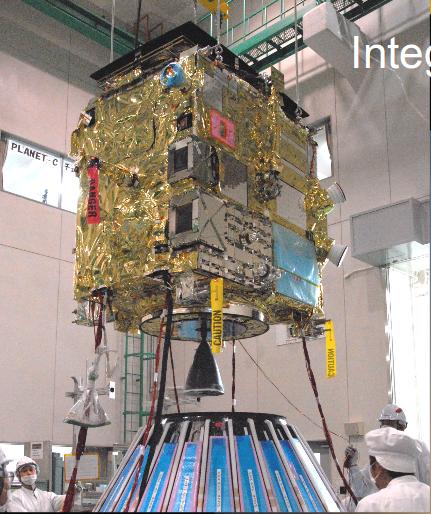
Image taken from a presentation by Takeshi Imamura (JAXA)
 Copyright © Michael Richmond.
This work is licensed under a Creative Commons License.
Copyright © Michael Richmond.
This work is licensed under a Creative Commons License.
Back in 2010, the Japanese space agency JAXA launched a space probe which was to travel to Venus and enter an orbit around the planet to study its atmosphere. The name of the probe: Akatsuki. It was a small probe -- less than 600 kg in mass -- but incorporated some cutting-edge technology.

Image taken from
a presentation by Takeshi Imamura (JAXA)
For example, the main engine's nozzle was made out of a special ceramic material, rather than metal, in order to save weight.
Now, in order to enter an orbit around a planet, a spacecraft needs to do more than just get close to it. The problem is (in simplified terms) the law of conservation of energy. As the spacecraft approaches the planet, it has some combination of
total energy = (gravitational potential energy) + (kinetic energy)
If the spacecraft simply coasts into a close approach, it will speed up as it comes close -- then zoom around the planet and fly back out, escaping from the planet's gravitational pull. Look at the right-hand panel below.
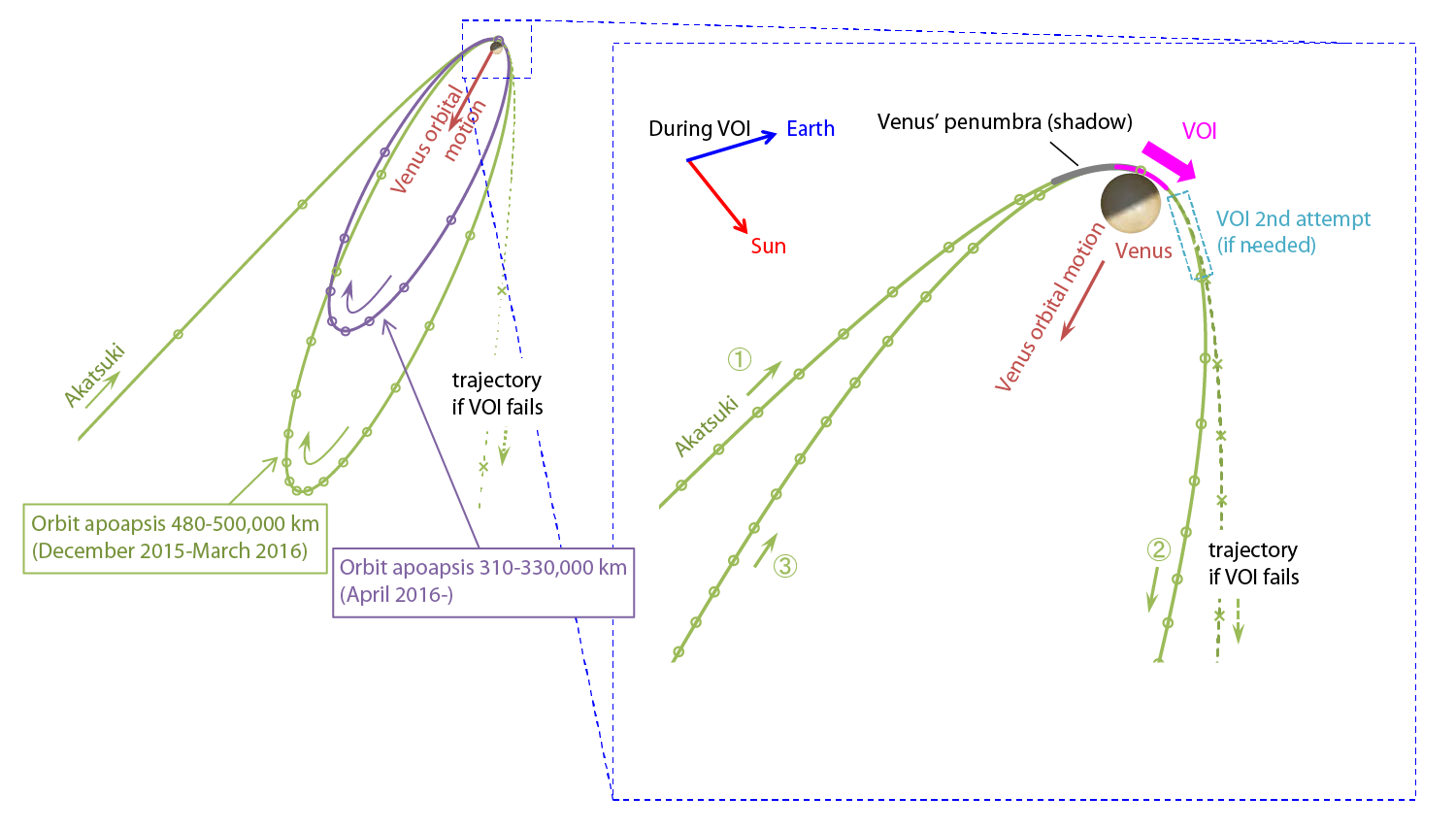
Figure originally provided by JAXA; taken from
Emily Lakdawalla' blog for Dec 5, 2015
with translations by Emily (I think).
But if the spacecraft can fire its engines in the proper direction -- BACKWARDS -- as it makes its closest approach, it can kill much of its kinetic energy. That will leave it with a small total energy. If the total energy is small enough, the craft will end up in an elongated orbit around the planet.
Rocket scientists call this an orbital insertion manuever. Look at the left-hand panel of the figure above to see the basic idea.
So, back on Dec 7, 2010, Akatsuki made its scheduled approach to Venus. As it flew past, the spacecraft oriented itself so that it was backwards, with its engine pointing forward in the direction of motion. The main engine -- which provides 500 Newtons of thrust -- was ordered to fire, in order to slow the probe's motion.
Unforunately, a problem occurred: a valve didn't open properly.
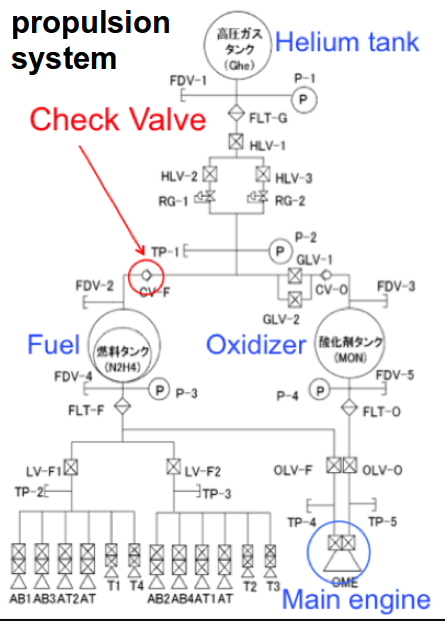
Image taken from
a presentation by Takeshi Imamura (JAXA)
As a result, the combustion of the fuel and oxidizer in the nozzle of the engine was not smooth and properly centered. After a short time, the ceramic nozzle of the engine cracked and broke.
Whoops.
As a result, the probe did NOT slow down as much as planned, and so flew past Venus.
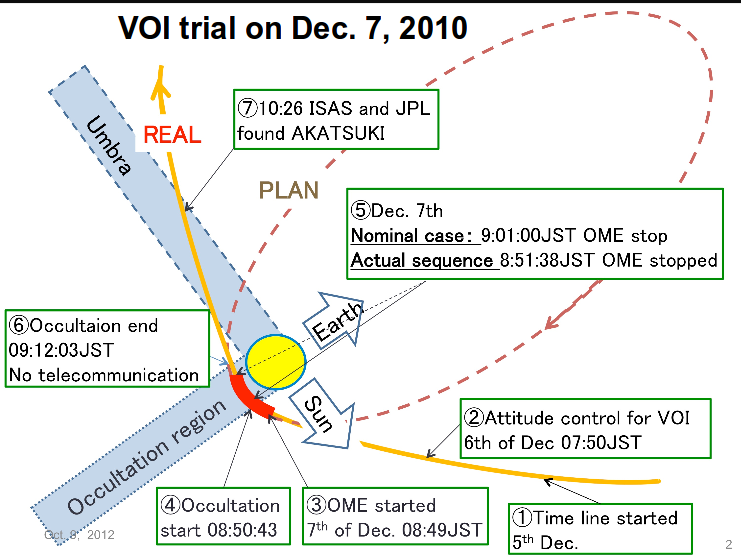
Image taken from
a presentation by Takeshi Imamura (JAXA)
But brave little Akatsuki and his controllers did not give up. They realized that even though the craft was flying off into space, its path would bring it back close to Venus again ... FIVE YEARS LATER.
If the spacecraft could just survive until December, 2015, it would have another chance to try to enter orbit around Venus.

Of course, even though Akatsuki could pass close to Venus again, it still could not fire the main engine -- so how could it decrease its speed enough to enter orbit?
The controllers realized that they could TRY to use a second, smaller set of engines: the Reaction Control System (RCE) thrusters. These are designed to orient the spacecraft via tips and tilts, and to make small adjustments to its motion.
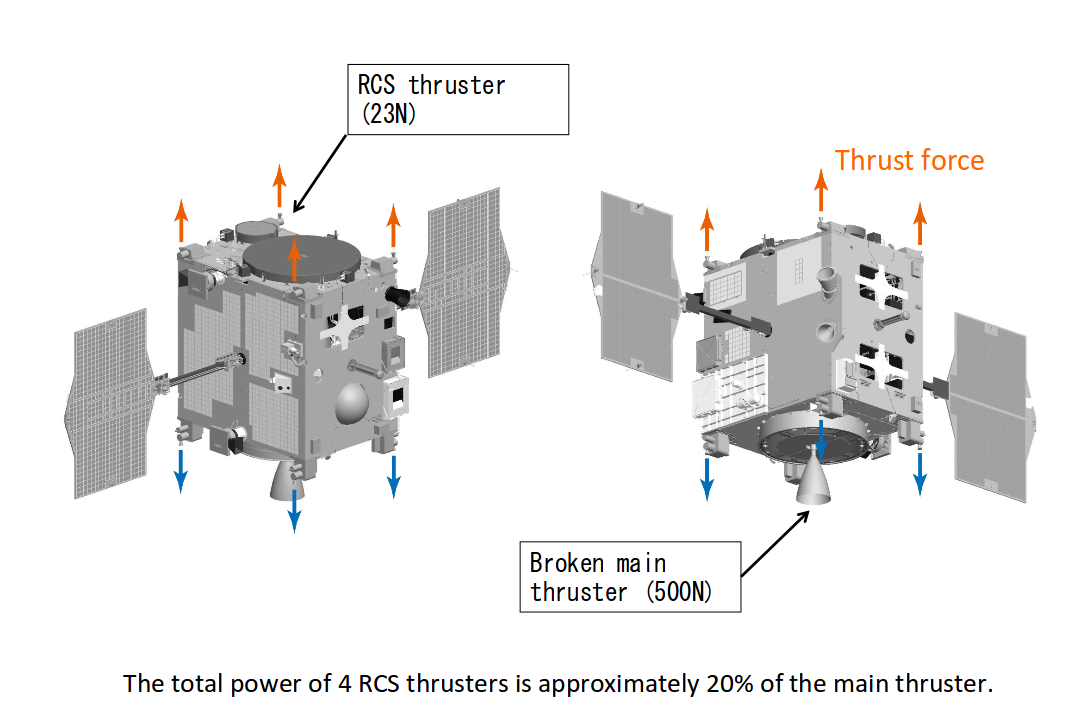
Image taken from
a presentation by Takeshi Imamura (JAXA)
Even when used together, the RCS engines don't come close to the thrust produced by the main engine ... but it was possible that they might be strong enough to slow Akatsuki enough.
Yesterday, Dec 7, 2015, as the spacecraft dove down toward Venus, the engineers commanded the RCS engines to fire. Would it be enough?
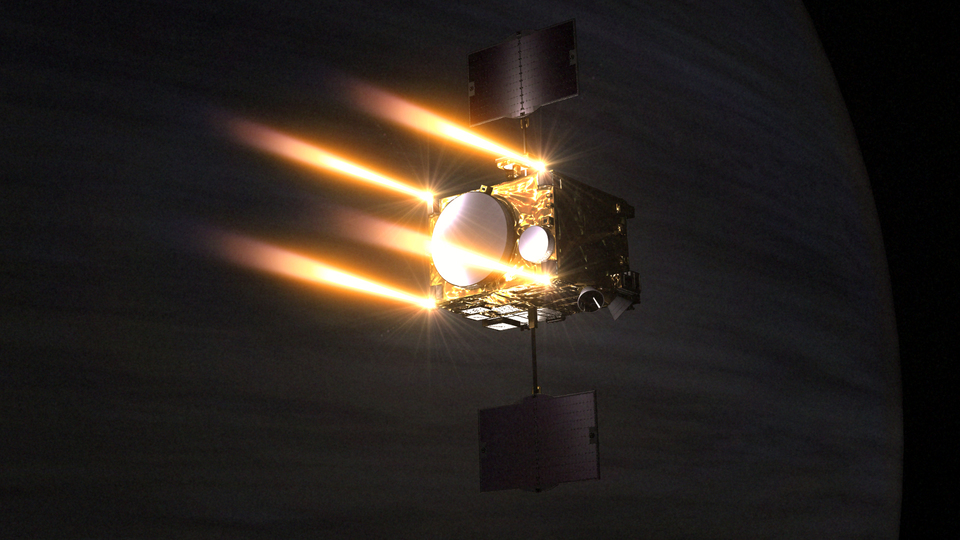
Image courtesy of Go Miyazaki, provided by
the Planetary Society Blog
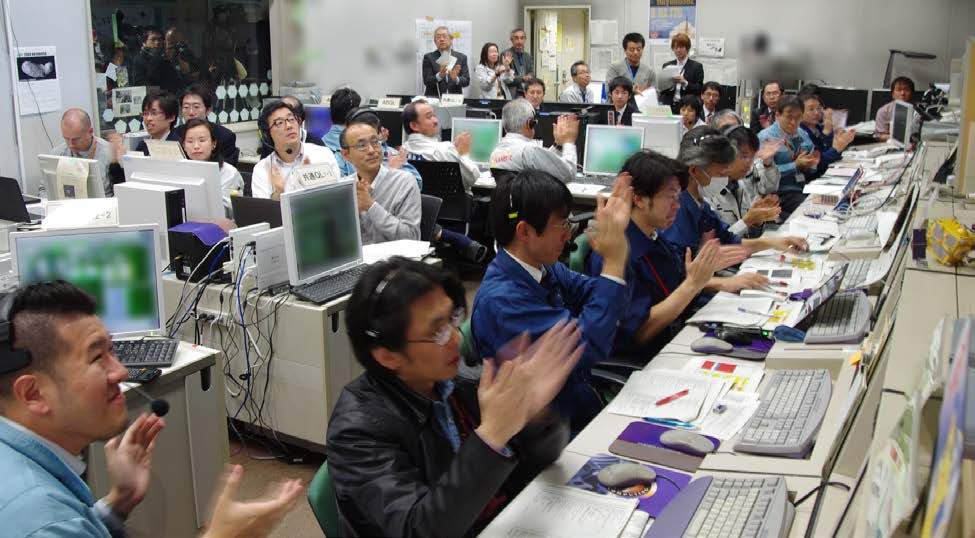
Image taken from
Planetary Society Blog entry for Dec 7, 2015
Yes!
If I understand the mission control statements correctly, the second scheduled engine burn was not needed.

Figure originally provided by JAXA; taken from
Emily Lakdawalla' blog for Dec 5, 2015
with translations by Emily (I think).
Now, there's still one small problem: because the RCS engines were less powerful than the main engine, they weren't able to slow the spacecraft as much as originally planned. That means that it flew wa-a-a-a-a-a-ay out in an elongated orbit before falling back towards Venus. Over the next four months, the spacecraft will fire its engines occasionally in order to slow it down and lower the apoaposis of its orbit.
Even if all the adjustments are made its orbit will be much larger than originally planned:
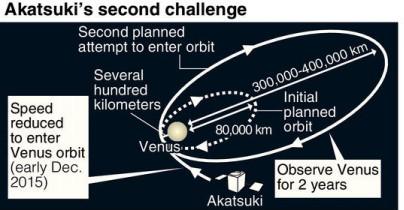
Figure taken from Alive Universe which states it was originally part of this article in the Yomiuri Shimbun (but that links appears to be broken now).
The differences are considerable:
Original plan Current orbit
---------------------------------------------------------------------
Min distance (km) 300 300
Max distance (km) 79,000 ~ 300,000
Period (days) 1.25 ~ 9
---------------------------------------------------------------------
Nonetheless, if all continues to go well, Akatsuki will be able to study Venus, at long last.
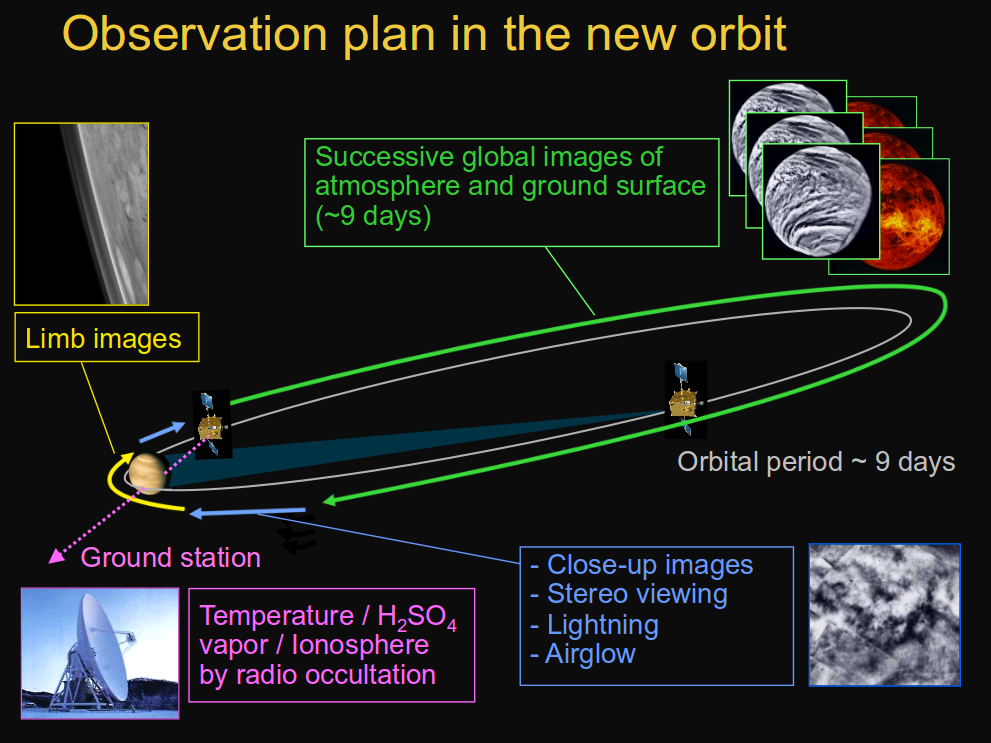
Image taken from
a presentation by Takeshi Imamura (JAXA)
 Copyright © Michael Richmond.
This work is licensed under a Creative Commons License.
Copyright © Michael Richmond.
This work is licensed under a Creative Commons License.